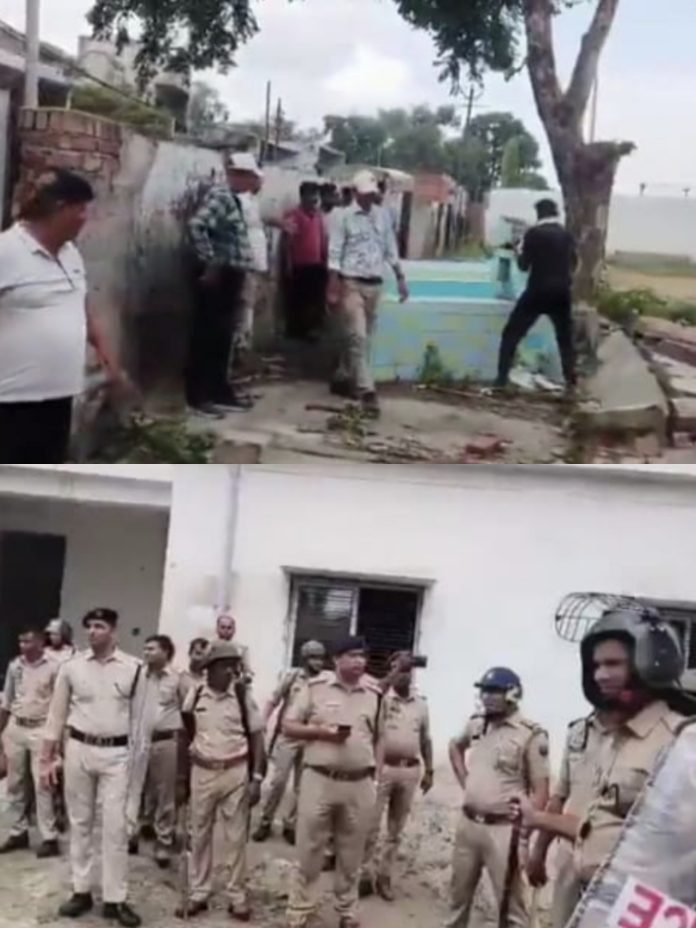Authorities demolished two mazars (shrines) on August 24 in Aligarh. They were built on railway land and came under scrutiny after a report by Sudarshan News highlighted the structures. The action, carried out by the Government Railway Police (GRP), reflects ongoing efforts to clear encroachments on railway property. It also shows how religious structures are increasingly drawn into political and media narratives in India.
Sudarshan News described the site as evidence of “Land Jihad.” The term is often used in certain political and media circles to portray encroachments as part of a deliberate demographic strategy. However, it has been widely criticized for inflaming communal tensions and oversimplifying the larger issue of illegal land occupation, which involves temples, mosques, mazars, and other religious sites. A 2022 RTI query revealed that in the Agra railway division, 57% of encroached land was occupied by temples, while mosques and tombs accounted for only 2.8%. This data challenges the selective focus often projected by such narratives.
The incident also mirrors similar drives in BJP-ruled Uttarakhand, where more than 300 mazars were demolished in 90 days under the pretext of removing unlawful encroachments. The BJP has supported these actions, presenting them as efforts to protect cultural identity and prevent what it calls “demographic change.” Critics argue that such measures disproportionately target minority communities while ignoring other forms of illegal occupation.
The Aligarh case is therefore not just about reclaiming railway land. It highlights how language, politics, and media intersect to shape narratives around encroachment, identity, and belonging.




